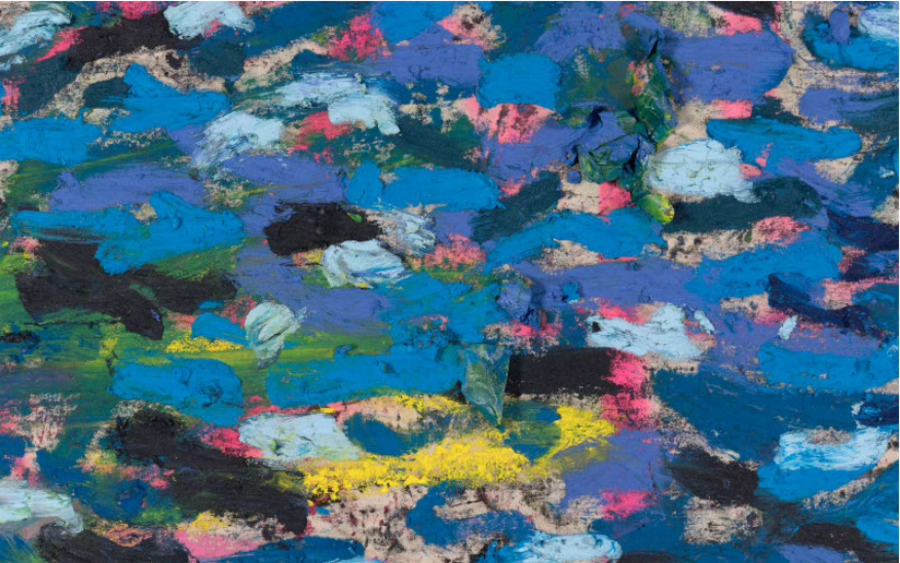At the height of Surrealism, in the 1920s and 1930s, representatives of the movement regularly engaged in acts of public provocation. Doing so allowed them to highlight Surrealism’s fundamentals: radicality, unconventionality, and the deconstruction of cultural norms. The poet Robert Desnos, for example, greeted a priest on the subway with a simple ‘Bonjour, madame’ (‘Good day, Miss’). Joan Miró, the world-famous, Barcelona-born artist, was more ambitious: ‘Down with the Mediterranean!’ he is said to have exclaimed on the streets of Paris.
Miró’s outburst suggests that it would be better to let everything associated with the Mediterranean - classical philosophy, imperial ambitions, meridional aesthetics, archeological treasures - sink beneath the waves. With the rise of globalized tourism and the ubiquity of social media, the opposite has happened: The sea’s picturesque beaches, exclusive resorts, and turquoise waters flood our feeds more vigorously than ever. She is the queen of the summer screen.
Throughout history, the Mediterranean has served as an evocative backdrop for countless creative endeavors, some of which have become cornerstones of Western civilization. It plays a central role in Homer’s Odyssey and Nobel Prize in Literature winner Albert Camus’s existential musings; it features prominently in the writings of German philosopher Friedrich Nietzsche and French historian Fernand Braudel. And of course, it has been an important component in the work of many artists. Several have celebrated its beauty by depicting it (think of Paul Cézanne or Claude Lorrain), while others have hinted at it in much less obvious ways. We shed light on two contemporary artists who chose the latter route.
Having spent his entire life in Italy, Francesco Gennari (b. 1973) says that he finds himself inevitably influenced by the coastal life, architectural diversity, and ancient remnants in and around his hometown of Pesaro, located on the country’s Adriatic coast. The cypress was one of his earliest photographic subjects, and the experience of swimming in the sea, as well as the region’s distinctive sunlight, have served as inspiration for his sensitive, minimalist sculptures. Gennari also points to fellow Italian painter Giorgio de Chirico, whom he regards as an artist who masterfully captured the Mediterranean’s essence. Gennari sees the Mediterranean as a reservoir of diverse civilizations that enrich one another. He emphasizes the singularity of this space and warns: ‘I observe a tendency towards a loss of reciprocal identity; the basin’s multicolored identity must be preserved and safeguarded against the encroaching risk of cultural homogenization.’
Pour le peintre Thomas Huber (né en 1955), le lac devient un lieu de retour aux sources. « Lago Maggiore », le titre de son exposition personnelle au MASI Lugano qui s’est tenue en début d’année, a marqué un tournant dans son travail. Les plus grandes toiles exposées sont débarrassées des éléments architecturaux qui définissaient ses œuvres antérieures. L’une d’elles, intitulée Am Abend (2023) et réalisée dans un format panoramique de 3 mètres de long, offre une expérience presque immersive du lac au crépuscule. Montrée d’un point de vue en hauteur, l’étendue d’eau est encadrée de collines fortement stylisées et de formes rondes évoquant des arbres. Les silhouettes des bâtiments et les lumières scintillantes sur les rives induisent une certaine contemporanéité, tandis que le motif de la vue sur le lac est exécuté avec une perfection épurée qui exprime l’intemporalité. De retour dans la région frontalière entre la Suisse et l’Italie après avoir passé plusieurs dizaines d’années à Berlin, Thomas Huber fait preuve d’une dévotion et d’une observation minutieuse du paysage local qui répond à un besoin universel de se sentir ancré et chez soi quelque part dans le monde.
It is intriguing to see how these two artists contextualize the Mediterranean so differently. And yet the wide-ranging diversity of ideas, environments, and histories associated with it may be the reason for its enduring popularity among artists. It is like a Roman mosaic: To truly grasp its complexity, one must step back and see the whole picture, while keeping in mind each stone contributes to its magnificence.
Tifenn Durand is an art enthusiast and a master’s student at Sciences Po, currently based in New York. She is a regular collaborator of Art Basel’s Editorial team.
Caption for top image: A bather in Marseille, photographed by Stéphanie Davilma for Art Basel.
Published on August 7, 2024.


